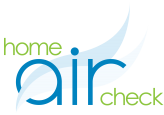
The New House Smell
It’s New but Is It Safe
Purchasing a brand new home is an exciting experience. Most new home buyers have quite the to-do list once the closing has taken place. Testing the quality of your indoor air should be one of your top priorities. Learn more about why testing your home air quality after moving in to a new home is so important in this article.
Many new home buyers are surprised to learn that air quality is a major concern when moving in to a newly constructed home. While the answer to this question may surprise you since everything inside of your home is new, it is still imperative to test your home air. Many of the materials used in new home construction contain alarmingly high levels of harmful formaldehyde and harmful VOCs. Studies have shown that newer homes often contain between 2 and 5 times the levels of outdoor air pollution. We recommend purchasing a Home Air Check test to alert you to the presence of dangerous VOCs and formaldehyde.
Hidden Dangers of the “New House Smell”
That smell is often a combination of toxic chemicals emitted from the fixtures and furnishings inside of your home. Harmful VOCs are often found in paint, carpeting, and hard surface flooring. One of the most dangerous and commonly used building materials is formaldehyde. Exposure to formaldehyde can cause throat, nose, eyes, and skin irritation. Prolonged exposure can lead to chronic respiratory problems, lung disease and cancer.
Formaldehyde is found in most plywood, particleboard, fiberboard, and other pressed wood products used to make furniture, cabinets, shelving, and counter tops as well as many other building materials such as resins and adhesives. New furniture made of pressed wood products or fiberboard also contain formaldehyde. Upholstered furniture is also treated with chemicals which can cause adverse health effects. All new homes or newly-remodeled homes should be tested for formaldehyde.
Testing the home will help to determine what your indoor air quality levels are and where to focus your efforts. A new home will need to have adequate ventilation and a thorough cleaning to reduce the amount of indoor air pollution. Use a HEPA filtered vacuum to trap dust particles and dust all surfaces with a microfiber cloth paying special attention to areas where dust accumulates such as windowsills, light fixtures and fan blades. Open windows and doors to let fresh air circulate throughout the home and turn on exhaust fans in bathrooms for several weeks after moving in to help circulate fresh air.

